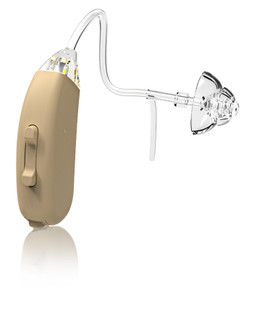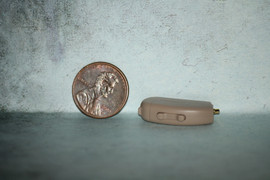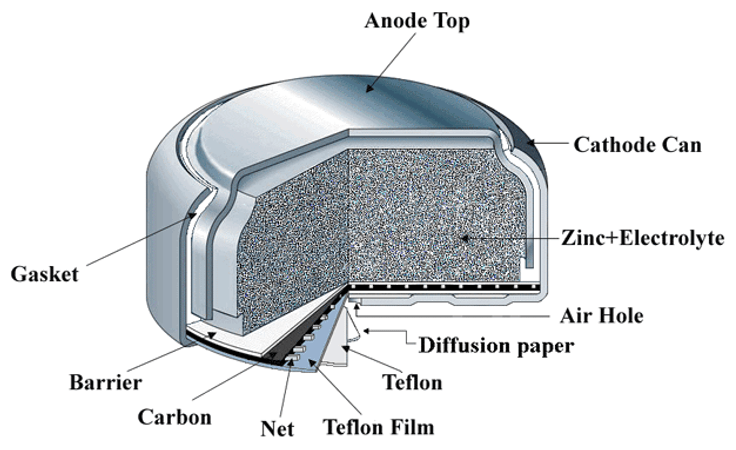Battery Powered vs Rechargeable Hearing Aids
Posted by DR Paul on Feb 01, 2023
Battery Powered vs Rechargeable Hearing Aids
Are you one of the millions of Americans over the age of 50 who are struggling to keep up with conversations due to hearing loss? If so, you may want to consider investing in a hearing aid. But how do you know which type is right for you - battery-powered or rechargeable? Don't worry, this blog post has all the information you need! We'll explore both types of hearing aids, discuss their pros and cons, and discuss what kind would best suit your individual needs. So if you're wondering whether battery-powered or rechargeable hearing aids are worth it - read on to find out!
Rechargeable hearing aids
Rechargeable hearing aids are the newest type of hearing aid on the market. They are rechargeable, meaning you can plug them into a power source (like a wall outlet or USB port) and recharge the batteries without needing to replace them. This makes rechargeable hearing aids more convenient and cost-effective than traditional battery-powered models.
The pros and cons of rechargeable hearing aids
Rechargeable hearing aids have several advantages over traditional battery-powered models. The rechargeable batteries last longer and are more reliable than disposable batteries, meaning you don't need to worry about running out of power or having them die on you. Additionally, rechargeable hearing aids come with rechargeable components like microphones, receivers, and transmitters - making them an even more cost-effective choice.
However, rechargeable hearing aids also have some drawbacks. For one, they come with higher upfront costs than traditional battery-powered models. Additionally, rechargeable units require specialized charging accessories and cables which are often not included in the package when you purchase the hearing aid - making it important to factor in these costs when making your decision.
How rechargeable hearing aids work
Rechargeable hearing aids use rechargeable batteries like lithium-ion or nickel-metal hydride to power the device. When these rechargeable batteries run low, they can be plugged into a power source (such as a wall outlet or USB port) to recharge them without needing to replace them. The rechargeable components of rechargeable hearing aids like microphones, receivers, and transmitters can also recharge with rechargeable batteries. Most rechargeable hearing aids come with a charging station that conveniently stores all of your rechargeable components and helps to ensure they are always ready to use.
Why are battery-powered hearing aids better than rechargeable hearing aids?
Battery-powered hearing aids are typically more affordable than rechargeable models and provide users with greater flexibility. Battery-powered hearing aids don't require any specialized charging accessories or cables, so they can be used on the go without having to worry about a power source. Additionally, because battery-powered hearing aids use traditional disposable batteries, you never have to worry about running out of power - simply replace the battery when it runs low.
Compare rechargeable hearing aids to battery-powered hearing aids
When deciding between rechargeable and battery-powered hearing aids, it is important to consider the pros and cons of each option. Battery-powered hearing aids are often seen as more cost-effective due to their lower purchase price compared to rechargeable units. Additionally, they do not require additional charging supplies or cables and can be quickly replaced when batteries run low.
Rechargeable hearing aids, however, offer the convenience of rechargeable components and rechargeable batteries. This means that you don't need to worry about constantly replacing disposable batteries or running out of power unexpectedly. Additionally, rechargeable hearing aids often come with a charging station for your rechargeable components so they are always ready to use.
Ultimately, it is important to consider your individual needs when deciding between rechargeable and battery-powered hearing aids. If you're looking for cost savings or don't require rechargeable components, battery-powered hearing aids may be the better choice. But if convenience and reliable charging are more important to you, rechargeable hearing aids may be the right choice. Ultimately, it's important to discuss your needs with a hearing healthcare professional and make sure you choose the best option for you.
Kinds of rechargeable hearing aid and which is best for you
The best rechargeable hearing aid depends on the user’s lifestyle and needs. For elderly users, rechargeable hearing aids with longer battery life are ideal. Rechargeable models that offer large rechargeable batteries, charging stations, and backup disposable batteries are great options for seniors who may not be able to charge their devices as often.
For those who are more active, rechargeable hearing aids with rechargeable microphones, receivers, and transmitters are the best choice. These rechargeable components provide power for longer periods of time without needing to be recharged as often. Additionally, rechargeable hearing aid models with USB ports or charging stations make it easy to recharge on the go.
The cost and maintenance associated with rechargeable hearing aids
The cost of rechargeable hearing aids can vary greatly depending on the features and technology included in the device. Generally, rechargeable models tend to be more expensive than battery-powered hearing aids but may offer greater benefits in terms of convenience and power life. Additionally, rechargeable hearing aid batteries can be expensive to replace, so it is important to factor that into the overall cost of ownership.
In terms of maintenance, rechargeable hearing aids typically require more upkeep than battery-powered models. This may include regularly cleaning and changing rechargeable batteries as needed, as well as ensuring the charging station is free from dust and debris. Additionally, rechargeable hearing aid components should be stored in a cool, dry place to ensure proper functioning. With regular maintenance and care, rechargeable hearing aids can provide reliable power for many years.
Overall, rechargeable hearing aids offer convenience and reliability but may come with a greater cost and require more maintenance than traditional battery-powered models. It is important to consider your needs when deciding between rechargeable and battery-powered hearing aids. Hear-Better.com can help you make the best decision for your individual needs. With rechargeable hearing aids, you can be sure that you will have reliable power and rechargeable components that are always ready to go!
Tips on how to get the most out of your rechargeable hearing aid experience
There are several tips to help you get the most out of your rechargeable hearing aid experience. First, it is important to charge your rechargeable components regularly and use only the power adapter recommended by your hearing health provider. Additionally, be sure to store rechargeable components in a cool, dry place when not in use so that they don’t overheat. Finally, be sure to clean rechargeable components regularly, using a soft cloth and earwax cleaning solution recommended by your hearing health provider. With regular maintenance and care, rechargeable hearing aids can provide reliable power for many years. Ultimately, rechargeable hearing aids offer convenience and reliability but may require more upkeep than traditional battery-powered models. It is important to consider your needs when deciding between rechargeable and battery-powered hearing aids. Your hearing health provider can help you make the best decision for your individual needs. With rechargeable hearing aids, you can be sure that you will have reliable power and rechargeable components that are always ready to go!
Summary and conclusion
Rechargeable hearing aids offer convenience and reliability for users with a variety of needs. The cost of rechargeable hearing aids can vary greatly depending on the features and technology included in the device, and rechargeable batteries can be expensive to replace. It is important to factor these elements into the overall cost of ownership when deciding between rechargeable or battery-powered hearing aids. Although rechargeable hearing aids require more upkeep than traditional battery-powered models, they can provide reliable power and rechargeable components that are ready to go if maintained properly. Ultimately, rechargeable hearing aids offer a great option for those looking for convenience and reliability without the hassle of constantly replacing batteries. Hear-Better.Com can help you make the best decision for your individual needs, so be sure to consult with them before making a purchase. With rechargeable hearing aids, you can be sure that you will have reliable power and rechargeable components that are always ready to go!
In conclusion, rechargeable hearing aids offer convenience and reliability but may require more upkeep than traditional battery-powered models. It is important to consider your needs when deciding between rechargeable and battery-powered hearing aids, as rechargeable batteries can be expensive to replace. With regular maintenance and care, rechargeable hearing aids can provide reliable power for many years. Your hearing health provider can help you make the best decision for your individual needs, so be sure to consult with them before making a purchase.










